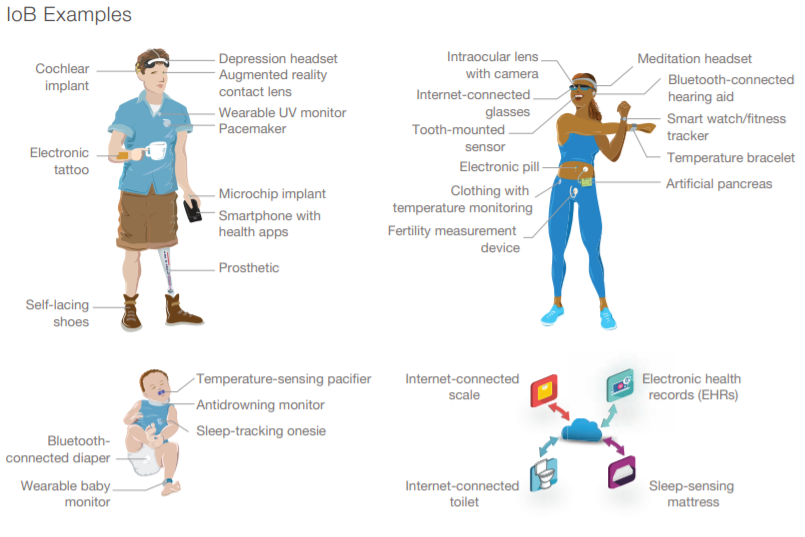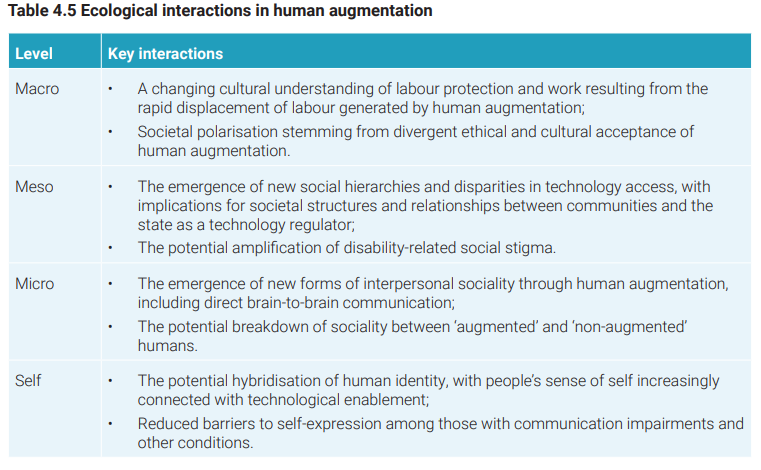RAND Corporation: “Internet Of Bodies May Lead To Internet Of Brains” By 2050
 Hive mind. The Collective. Hyper-reality. The Borg. RAND Corp. has been a think tank closely associated with the Trilateral Commission since 1973, producing studies like this. All roads lead back to the military in their quest to create the perfect “super soldier,” shades of Hitler’s “Superman.” The military is chock full of narcissistic Technocrats whose holy grail is and always has been to “Master the Human Domain.” RAND is lighting the way:
Hive mind. The Collective. Hyper-reality. The Borg. RAND Corp. has been a think tank closely associated with the Trilateral Commission since 1973, producing studies like this. All roads lead back to the military in their quest to create the perfect “super soldier,” shades of Hitler’s “Superman.” The military is chock full of narcissistic Technocrats whose holy grail is and always has been to “Master the Human Domain.” RAND is lighting the way:
“Given the direct embedding of technology into human cognitive, physical and psychological functions, substantial levels of human augmentation may ‘[blur] the notions of identity and of what it means to be human’, introducing new normative lenses on humanity and producing new stigma for those not seen as attaining those norms.” (p. 59, 4.5.3 Cultural Implications)
— Technocracy News & Trends Editor Patrick Wood
By: via The Sociable
The Internet of Bodies ecosystem may lead to the Internet of Brains sometime between 2035 and 2050, according to a UK Defence-commissioned RAND report.
Commissioned by the UK Defence Science and Technology Laboratory and conducted by RAND Europe and Frazer Nash Consulting, the study “Cultural and technological change in the future information environment” looks at six technologies and information environments and their implications for British defense.
They include:
- Automated information systems
- A virtual metaverse
- Augmented and mixed reality
- Advanced connectivity
- Human augmentation
- Information security
A major theme running through these information environments is transhumanism — the merger of humans and machines.
According to the report, “Advances in object connectivity may eventually extend to human bodies. Researchers refer to the potential development of an internet-linked network of human-connected devices collecting end users’ biometric data as an ‘internet of bodies […] An ‘internet of bodies’ may also ultimately lead to an ‘internet of brains’, i.e. human brains connected to the internet to facilitate direct brain-to-brain communication and enable access to online data networks.’“
The Internet of Bodies and the coming Internet of Brains fall specifically under the category of “human augmentation technologies,” which “refer to technologies that enhance human capabilities, either physically or cognitively.”
According to the report, the technological applications most associated with human augmentation include:
- Wearable devices and implants for tracking and analyzing physiological and environmental data (e.g. biochips and implantable sensors). These technologies aim to achieve real-time continuous monitoring of physiological data to understand human health conditions and performance
- Sensory augmentation technologies such as hearing and retinal implants designed to improve or augment sensory activities, particularly vision and hearing. Smart prosthetics are a related category, including exoskeletons, i.e. whole-body robotic suits that enhance end users’ physical capabilities and improve their mobility, strength, endurance and other abilities
- Brain-computer or brain-brain interfaces that establish direct communications between human brains and/or computer devices
Elon Musk’s Neuralink is the latest example of a brain-computer interface that received much publicity for helping a paralyzed man, but what happens when human augmentation goes from healing to enhancement?
Transhumanism may lead to superhuman abilities, but those abilities may be reserved for only a select chosen class while the rest of us programmable plebs could exist in a constant state of surveillance and control until we become irrelevant.
According to the report, “While some experts predict the tactical improvement of human capabilities, others have explored the potential emergence of ‘trans-humanism’ within the 2050 timeframe.
“This concept describes ‘a new form of human (a trans-human) […] where information and communication technologies and biomedicine will fundamentally improve the human condition and greatly enhance human intellectual, physical and psychological capacities.”
For the chosen ones, they could receive human performance enhancement that would give them the ability to never tire, think smarter, move faster, jump higher, see farther, hear better, hit harder, live longer, adapt stronger, and calculate quicker than any other human being on the planet.
Meanwhile, the fourth industrial revolution is already merging our physical, biological, and digital identities in order to monitor, manipulate, and reprogram our behavior.
If and when humans become fully integrated with machines on a large scale, where will the technology end and the human begin?

Internet of Bodies Examples, RAND Corporation 2020
The authors of the RAND report say that “Given the direct embedding of technology into human cognitive, physical and psychological functions, substantial levels of human augmentation may ‘[blur] the notions of identity and of what it means to be human’, introducing new normative lenses on humanity and producing new stigma for those not seen as attaining those norms.”
On an individual level, if you wish to remain a natural human and not become part of “Homo sapiens technologicus,” you might not be able to compete in the workplace, and you might be rendered part of the useless class of human.
On an international level, countries, cultures, and communities that don’t participate in the transhumanist experiment may find themselves easily conquered by those that do.
The report adds, “The social dynamics of human augmentation adoption may include disparities in access to relevant technologies, thus introducing new forms of digital exclusion whereby the economically disadvantaged cannot access the same enhancement level as other societal segments.”
At the same time, natural humans who don’t get chipped may have an advantage in that they may not be as easily manipulated and controlled by thoughts or memories that may not be entirely their own.
In other words, transhumanism may lead to super-human capabilities for some, and mind control for others.

Manipulation and control are other areas of concern with human augmentation, the Internet of Bodies, and the Internet of Brains.
False information, images, sounds, memories, and thoughts could one day be downloaded to these devices and uploaded to the human brain with devastating effect.
According to the report, “Sensing technologies (e.g. hearing implants), in particular, carry a risk of interference, whereby devices could be manipulated to provide erroneous information to the end user.
“Such manipulation of sensory inputs would substantially amplify current threats from artificially creating or manipulating visual and auditory information (e.g. images and videos).
“Therefore, human augmentation could undermine end users’ cognitive safety and influence their ability to assess the credibility of information they receive while using human augmentation technologies.“
Sourced from Technocracy News & Trends
Become a Patron!
Or support us at SubscribeStar
Donate cryptocurrency HERE
Subscribe to Activist Post for truth, peace, and freedom news. Follow us on SoMee, Telegram, HIVE, Minds, MeWe, Twitter – X, Gab, and What Really Happened.
Provide, Protect and Profit from what’s coming! Get a free issue of Counter Markets today.

